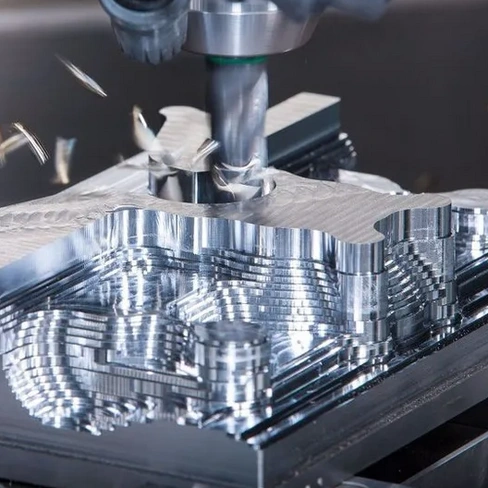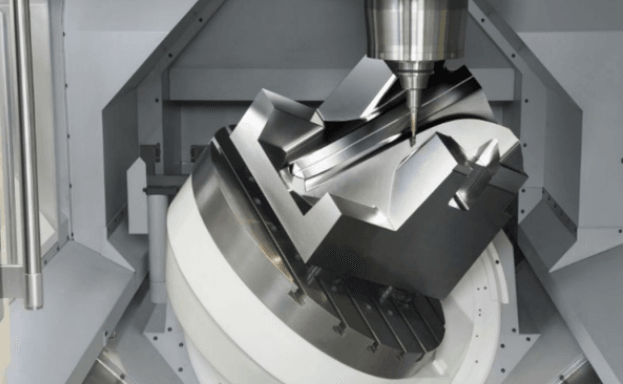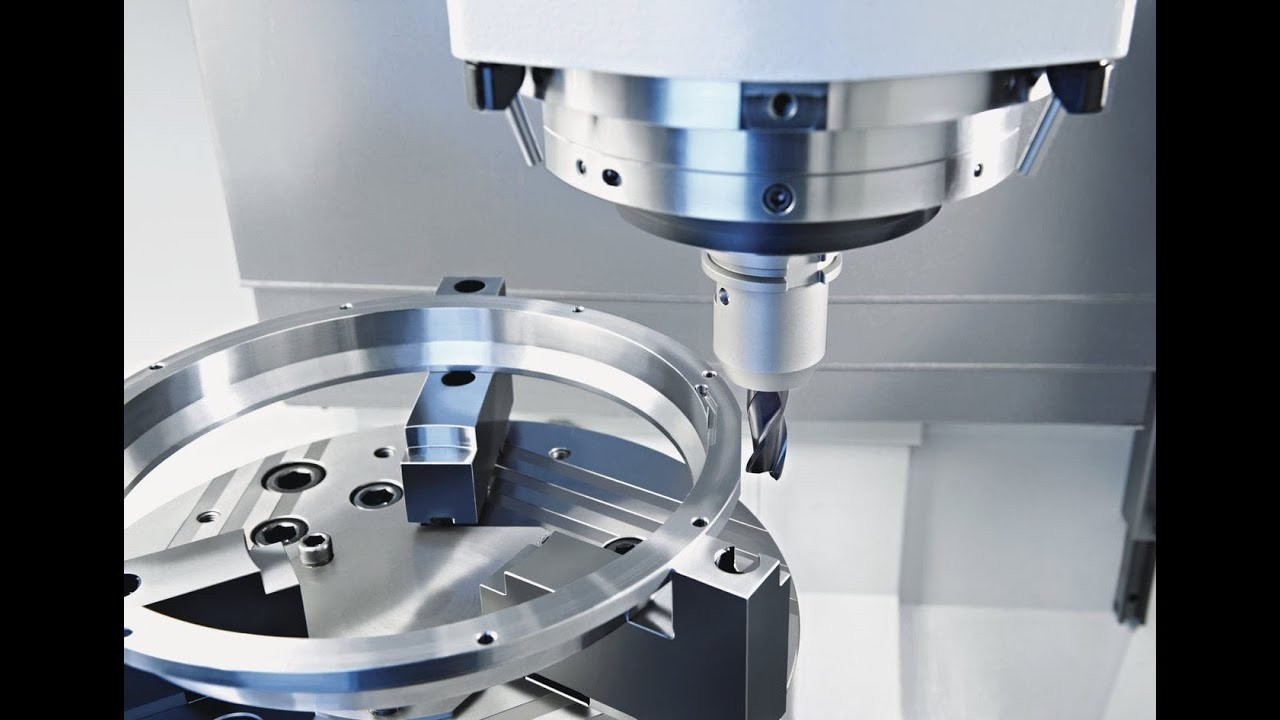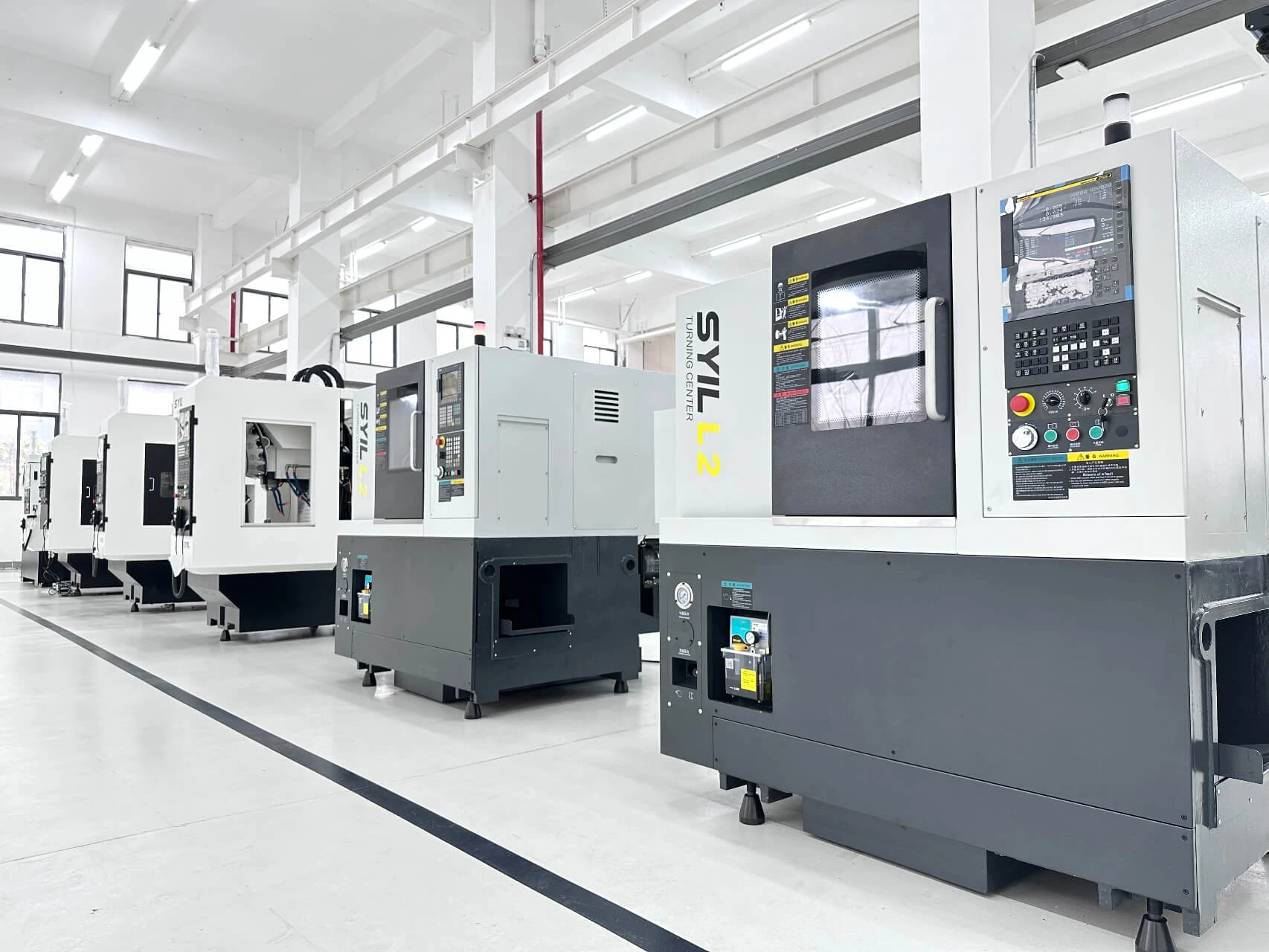Introduction

In the realm of modern manufacturing, titanium CNC machining has emerged as a powerhouse, captivating industries with its unique properties and versatility. But what exactly makes titanium such a hot commodity in the machining world? This introduction will navigate through the essentials of titanium CNC machining, highlighting why it stands out among other materials and exploring effective techniques for harnessing its potential.
Understanding Titanium CNC Machining
Titanium CNC machining involves using computer-controlled machines to shape and cut titanium into precise components. This process requires specialized knowledge and equipment due to titanium's distinct characteristics, which can pose challenges during machining. Understanding the intricacies of how titanium can be CNC machined is crucial for achieving optimal results while maintaining efficiency.
Why Choose Titanium for Machining?
The allure of titanium lies not only in its strength-to-weight ratio but also in its exceptional corrosion resistance, making it ideal for various applications ranging from aerospace to medical devices. Many engineers often ask, Does titanium have good machinability? While it presents certain challenges compared to softer metals like aluminum or steel, with the right approach and tools, you can effectively machine this remarkable material. The benefits of using titanium far outweigh the hurdles, especially when performance and durability are paramount.
Techniques for Effective Titanium Machining
To excel in titanium CNC machining, employing advanced techniques is essential for overcoming common obstacles such as tool wear and heat generation during cutting processes. Techniques like optimizing feed rates and speeds can significantly enhance efficiency while maintaining precision in your cuts. Additionally, understanding what materials cannot be CNC machined alongside mastering how to use a steel CNC machine or even a CNC machine for billet aluminum can provide valuable insights into best practices tailored specifically for working with titanium.
Basics of Titanium Machinability

Does Titanium Have Good Machinability?
The question Can titanium be CNC machined? often arises in discussions about its machinability. While titanium can certainly be machined, it does not fall into the category of easy-to-machine materials like aluminum or steel. Factors such as high strength-to-weight ratio and low thermal conductivity contribute to its reputation for being difficult to work with, leading many to wonder why titanium has earned this reputation.
However, with the right parameters—such as optimized feed rates and cutting speeds—machining titanium can yield excellent results. The key lies in using specialized tooling designed for titanium CNC machining that can withstand the material's unique properties. Thus, while it might not be the most forgiving metal to machine, proper techniques can make the task much more manageable.
Key Properties of Titanium Alloys
Titanium alloys are renowned for their exceptional strength, lightweight nature, and corrosion resistance. These qualities make them a popular choice in industries ranging from aerospace to medical devices. When considering how is titanium machined? It’s essential to understand these properties because they directly influence machining strategies.
For instance, titanium's low thermal conductivity means that heat generated during machining doesn't dissipate as quickly as it does with metals like steel or aluminum. This characteristic necessitates careful temperature management during processing to prevent tool wear and ensure precision cuts. Additionally, various grades of titanium alloys possess different characteristics; some may machine better than others based on their specific compositions.
Comparing Titanium to Other Metals
When comparing titanium to other metals like steel or aluminum in terms of machinability, several factors come into play that highlight both strengths and weaknesses of each material type. For example, while a steel CNC machine may handle carbon steels efficiently due to their favorable machinability ratings, titanium requires more specialized attention and tooling due to its unique challenges.
Aluminum is often favored for projects requiring high-speed machining because it's softer and easier on tools compared to both steel and titanium alloys. However, when weight-to-strength ratios are considered in applications such as aerospace design or medical implants where durability is critical—titanium shines brightly against its competitors despite being more challenging to machine effectively.
In conclusion, understanding how these materials stack up against each other provides valuable insight into selecting the right approach for your projects—especially when contemplating whether a CNC machine for billet aluminum would suffice versus investing in equipment better suited for handling tough titans like titanium.
Common Titanium Machining Techniques

Titanium CNC machining is a specialized process that requires an understanding of both the material properties and the techniques used to shape it effectively. The unique characteristics of titanium, such as its strength-to-weight ratio and resistance to corrosion, make it an ideal choice for various applications. However, these same properties also pose challenges that necessitate advanced machining strategies.
How is Titanium Machined?
When considering how titanium is machined, it's essential to recognize that this metal does not behave like typical materials. Can titanium be CNC machined? Absolutely! However, the process often involves slower feed rates and lower cutting speeds compared to softer metals, due to titanium's tendency to work-harden during machining. This means that manufacturers must carefully select their tooling and parameters to avoid excessive tool wear while achieving precision.
In addition to standard milling and turning methods, titanium can be processed using techniques like electrical discharge machining (EDM) and water jet cutting. These advanced methods help mitigate some of the challenges posed by traditional machining processes. Ultimately, understanding how titanium is machined allows engineers and machinists to optimize their operations for better efficiency and quality.
Advanced Techniques for Titanium Cutting
Advanced techniques for titanium cutting are essential in maximizing productivity while minimizing costs associated with tool wear and machine downtime. High-speed machining (HSM) has gained popularity in recent years as a way to improve efficiency when working with this challenging material. By employing specialized tooling designed for high-performance applications, manufacturers can achieve faster cycle times without sacrificing precision.
Another innovative approach involves using cryogenic cooling during the machining process. This technique helps manage heat generated from friction, reducing thermal distortion and extending tool life significantly—making it a game-changer in titanium CNC machining practices. Ultimately, leveraging these advanced cutting methods can lead to substantial improvements in production rates while maintaining the integrity of finished parts.
The Role of Tooling in Titanium Machining
The role of tooling in titanium machining cannot be overstated; selecting the right tools is critical for achieving optimal results when working with this demanding metal. Does titanium have good machinability? While it presents challenges compared to other materials like aluminum or steel, using appropriate tooling can enhance its machinability significantly. Carbide tools coated with materials such as TiAlN or diamond-like carbon are popular choices due to their hardness and resistance to wear.
Moreover, proper tool geometry plays a vital role in successful titanium CNC machining operations; sharp edges help reduce cutting forces while preventing work-hardening issues during processing. Additionally, regular maintenance ensures that tools remain effective throughout their lifespan—an important consideration given that many materials cannot be CNC machined effectively without proper preparation or care taken during setup phases.
Selecting the Right CNC Machine

Choosing the right CNC machine is crucial for effective titanium CNC machining. The unique properties of titanium demand specialized equipment that can handle its challenges, such as heat generation and tool wear. Understanding the options available will ensure optimal performance and precision in your machining projects.
Benefits of SYIL CNC Machines
SYIL CNC machines are known for their robust design and high precision, making them ideal for titanium CNC machining applications. These machines offer advanced features such as high-speed spindles and rigid structures that minimize vibrations, ensuring accurate cuts in tough materials like titanium. Additionally, SYIL machines often come equipped with user-friendly software that simplifies programming and operation, allowing machinists to focus on quality rather than troubleshooting.
Choosing Between Steel CNC Machine and Others
When considering a steel CNC machine versus other options for titanium machining, it’s essential to evaluate specific needs and capabilities. While steel machines are sturdy and reliable, they may not always provide the precision required for intricate titanium components. Alternatives like aluminum or composite-frame machines could offer weight advantages but might lack durability under heavy loads typical in titanium operations.
Factors Influencing CNC Machine Selection
Several factors influence the selection of a CNC machine for titanium machining, including material properties, production volume, and budget constraints. First off, does titanium have good machinability? While it generally requires more careful handling than softer metals due to its strength and heat resistance, choosing a suitable machine can mitigate some of these difficulties. Additionally, understanding what materials cannot be CNC machined effectively will help narrow down your choices to those best suited for handling tough alloys like titanium.
Challenges in Titanium CNC Machining

Titanium CNC machining is a highly specialized process that presents unique challenges. While titanium is favored for its strength and lightweight properties, it also poses difficulties that machinists must navigate. Understanding these challenges is crucial for achieving optimal results in any titanium machining project.
What Materials Cannot Be CNC Machined?
When considering the question, What materials cannot be CNC machined? it's essential to recognize that not all metals are suitable for CNC processes. For instance, materials like certain ceramics and composites can be too brittle or hard, leading to tool damage during machining. Additionally, while titanium can be effectively machined, softer metals like lead may not yield the same precision and might require different techniques than those used in titanium CNC machining.
Addressing Heat and Tool Wear
One of the most significant challenges in titanium CNC machining is managing heat generation and tool wear. Does titanium have good machinability? Not quite; its tendency to work-harden means that cutting tools experience rapid degradation if not properly managed. To combat this issue, machinists often employ advanced cooling techniques and select high-performance tooling designed specifically for cutting titanium, which helps maintain efficiency while minimizing wear.
Overcoming Machining Barriers
Overcoming barriers in how titanium is machined requires a strategic approach to tackle its unique properties head-on. Factors such as high cutting forces and potential vibration can hinder effective machining processes when using standard equipment like a steel CNC machine or even a CNC machine for billet aluminum. By utilizing innovative techniques and machinery tailored to handle the specific demands of titanium, manufacturers can enhance their productivity while ensuring quality outcomes.
Best Practices for Machining Titanium

Machining titanium can be a rewarding yet challenging endeavor, requiring a nuanced approach to achieve optimal results. To ensure high-quality outputs and efficiency in production, it’s essential to adopt best practices tailored specifically for titanium CNC machining. This section delves into optimizing feed rates and speeds, reducing tool wear, and effective finishing techniques.
Optimizing Feed Rates and Speeds
When it comes to titanium CNC machining, understanding the right feed rates and spindle speeds is crucial. Titanium does not have good machinability compared to other metals; thus, slower speeds combined with appropriate feed rates are often more effective. Adjusting these parameters helps mitigate heat buildup—a significant concern when machining titanium—and ensures smoother cuts while prolonging tool life.
Finding the sweet spot for your specific titanium alloy can take some trial and error but is well worth it in the end. Start with conservative settings, then gradually increase until you find the optimal balance between speed and quality of cut. Remember that too high of a speed can lead to disastrous consequences like tool breakage or poor surface finish—nobody wants that!
Strategies for Reducing Tool Wear
Tool wear is one of the biggest challenges faced during titanium CNC machining due to its unique properties—hardness being one of them. One effective strategy involves using specialized tooling materials designed specifically for cutting titanium; carbide tools coated with TiAlN (Titanium Aluminum Nitride) are particularly beneficial in this regard. These coatings help reduce friction and improve thermal resistance during machining operations.
Additionally, implementing proper cooling strategies can significantly decrease tool wear while enhancing overall performance. Using flood coolant or high-pressure mist systems provides lubrication that reduces heat generation at the cutting edge—keeping both your tools sharp and your workpieces intact! Regularly inspecting tools for wear can also help you catch issues before they escalate into costly downtime.
Tips for Effective Titanium Finishing
Finishing operations are critical in achieving the desired surface quality when working with titanium alloys; after all, who doesn’t want their parts looking sleek? One key tip is to use slower feed rates during finishing passes while maintaining higher spindle speeds—this combination helps produce a finer surface finish without compromising dimensional accuracy.
Another important consideration is selecting appropriate abrasives if grinding or polishing is needed afterward; diamond abrasives work wonders on titanium due to their hardness and durability compared to traditional options like aluminum oxide. Finally, always keep an eye on cleanliness during these processes; contaminants can lead to unwanted scratches or defects on your beautifully machined components.
Conclusion

In the world of manufacturing, titanium CNC machining stands out as a game-changer, offering unparalleled strength-to-weight ratios and corrosion resistance. As industries increasingly demand precision and durability, understanding how to effectively machine this remarkable metal is crucial. The future of titanium machining promises not only innovative techniques but also enhanced efficiency and quality in production processes.
Enhancing Precision in Titanium Machining
Enhancing precision in titanium CNC machining involves a delicate balance of technique and technology. With its unique properties, titanium presents challenges that require advanced methods to achieve tight tolerances and high-quality finishes. By leveraging modern CNC machines specifically designed for materials like titanium, manufacturers can ensure that every cut is made with utmost accuracy, addressing the question: does titanium have good machinability?
Moreover, optimizing feed rates and speeds plays a pivotal role in achieving those precise dimensions. Understanding how is titanium machined effectively translates into better outcomes on the shop floor, where even minor adjustments can lead to significant improvements in product quality. As we refine our approaches to this challenging material, we pave the way for more intricate designs that were once thought impossible.
Future Trends in Titanium CNC Techniques
The landscape of titanium CNC machining is evolving rapidly with the advent of new technologies and methodologies. Future trends suggest a shift towards automation and artificial intelligence to optimize machining processes further—making it easier than ever to answer questions like Can titanium be CNC machined? with confidence. As we explore these advancements, expect to see increased integration of smart tooling systems that monitor wear and performance in real-time.
Another exciting trend involves hybrid machining techniques that combine additive manufacturing with traditional subtractive methods for even greater flexibility when working with complex geometries. These innovations could redefine what materials can be efficiently processed; however, they also raise questions about what materials cannot be CNC machined due to their properties or compatibility issues with existing technologies. Embracing these trends will not only enhance productivity but also open doors for creative applications across various industries.
The Importance of Quality Control
Quality control remains paramount in any manufacturing process but takes on added significance when it comes to titanium CNC machining due to the material's unique characteristics. Ensuring consistent quality means implementing rigorous inspection protocols at every stage—from raw material selection through final finishing processes—to mitigate risks associated with tool wear or thermal deformation during machining operations.
Moreover, utilizing advanced measurement tools allows manufacturers to maintain tight tolerances while working with challenging materials such as steel CNC machines or even when transitioning from aluminum billets using a CNC machine for billet aluminum applications. This commitment to quality ensures that products meet stringent industry standards while minimizing waste—a win-win scenario for both manufacturers and clients alike.
As we look forward into the future of manufacturing practices involving titanium, maintaining an unwavering focus on quality will be critical in navigating challenges while capitalizing on emerging opportunities within this dynamic field.

